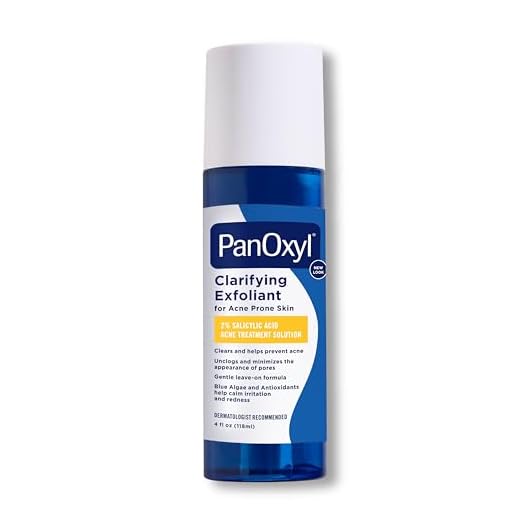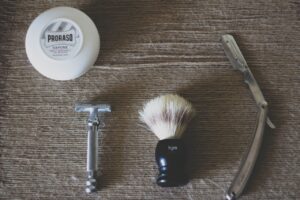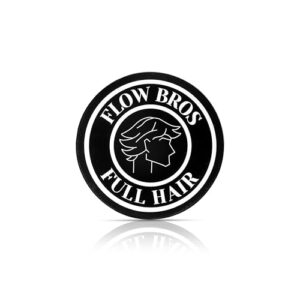Fast, Practical Relief for Neck Razor Bumps
Say goodbye to neck razor bumps with a SIMPLE, proven routine that works fast. This guide walks you through cleansing, shaving, treating, and prevention steps to soothe irritation, stop ingrown hairs, and reveal smoother, healthier skin without harsh treatments quickly.
What You’ll Need
Prep the Neck: Cleanse, Soften, and Exfoliate
Want fewer bumps before you shave? Proper prep cuts irritation by miles—here’s the fuss-free way.Cleanse the neck thoroughly with warm water and a gentle, fragrance-free cleanser to remove oil, sweat, and product buildup that trap hairs and cause bumps.
Pat the area dry with a clean towel, then apply a warm compress for 2–3 minutes to soften stubble and open pores—think of it like warming dough before shaping.
Exfoliate lightly while skin is still warm: use a chemical exfoliant (about 2% salicylic acid) or a soft physical scrub to lift dead skin and free trapped hairs.
Finish by applying a thin layer of shaving-specific pre-shave oil or gel to create a smooth surface. Repeat this prep before each shave; allow products a minute to absorb for protection and healing.
Shave Smart: Tools, Direction, and Technique
Close isn’t always better—want a neat neck without the bumps? Learn which strokes actually help.Choose a single‑blade safety razor or a sharp multi‑blade and replace blades frequently (every 5–10 shaves or at first tug). Shave in the direction of hair growth on the neck; against‑the‑grain raises razor‑bump risk. Stretch the skin slightly with your free hand. Use short, light strokes—think of painting a fence—and never press hard. Rinse the blade after every pass and reapply lather between passes. Re‑lather and do one gentle cross‑grain pass for extra closeness instead of multiple against‑the‑grain strokes. Use an electric trimmer set to a close‑but‑not‑skin level for very sensitive necks. Finish by applying a non‑comedogenic balm and avoid tight collars for at least 24 hours to reduce friction and redness.
Treat the Bumps: Calm, Unclog, Don’t Aggress
Got bumps now? Stop, don’t squeeze—these safer fixes calm inflammation and free trapped hairs fast.Focus on soothing inflammation and freeing trapped hairs safely.
Apply warm compresses (a clean washcloth soaked in warm water) for 5–10 minutes twice daily to soften skin and reduce swelling—great when a painful bump pops up after a rushed shave before work.
Cleanse gently with a salicylic-acid cleanser to unclog pores; avoid harsh rubbing that irritates the follicle.
Use a pea‑sized amount of 1% hydrocortisone cream for up to a week on very red, painful bumps, or apply fragrance‑free aloe gel for milder irritation.
Avoid picking, squeezing, or shaving over active bumps to prevent scarring or spreading infection.
Sterilize a needle or tweezers with alcohol and lift a visible ingrown hair tip gently after softening; stop if the follicle resists or bleeds.
Apply an OTC topical antibiotic for signs of infection and consult a dermatologist for recurring or severe cases.
Preventive Habits: Exfoliate, Moisturize, and Adjust Grooming
A few weekly tweaks beat daily pain—build a tiny routine that makes razor bumps rare instead of constant.Exfoliate the neck two to three times weekly with a chemical exfoliant (salicylic or glycolic acid) or a gentle physical scrub to prevent dead skin buildup and loosen hairs.
Moisturize daily with a lightweight, non‑comedogenic lotion or an aftershave balm containing soothing ingredients like niacinamide or aloe to keep skin pliable.
Alternate exfoliation and heavy moisturizing on different days if your skin is sensitive (for example: exfoliate Mon/Wed/Fri, moisturize nightly).
Trim hair regularly rather than shaving every day when possible, and consider growing a short stubble during flare‑ups to give follicles a break.
Over time these small habits dramatically reduce ingrown hairs and chronic razor bumps. Consistency prevents scarring and saves grooming time.
Best Ingredients & Products to Use (and Avoid)
From salicylic acid to niacinamide: know what speeds healing and what secretly makes bumps worse.Choose products that target inflammation, clogged pores, and bumps without over‑drying.
Fast Fixes That Work Today
Need visible improvement now? These quick steps calm swelling and stop bumps from getting worse.Wrap-Up: Be Consistent, Be Gentle
Treat, prevent, and adjust your grooming—cleanse, exfoliate, shave carefully, and use targeted products. Try this routine consistently, watch bumps fade, then share your results and inspire others today and beyond.













Question for the group — anyone tried laser or electrolysis specifically to stop razor bumps (ingrowns) on the neck? Worth the cost?
Some people do find long-term relief with laser hair reduction or electrolysis because they reduce hair growth and thus ingrowns. Results vary, and cost/commitment is high. Good option if topical measures fail.
I had laser — it reduced the frequency of bumps a lot, but required multiple sessions. Not cheap but it worked for me.
This is honestly the most sensible grooming advice I’ve read. I used to exfoliate DAILY thinking more = better. Big nope.
I switched to a once-weekly physical scrub and a BHA 2% leave-on twice a week and my neckline is way calmer.
Also, the “Preventive Habits” section mentioning pillowcase changes — so true! I didn’t think of fabric build-up causing flare-ups.
Tiny rant: why do some brands hide concentrations of active ingredients? Ugh. Transparency plz.
Same on pillowcases — changed mine to a silk one and noticed fewer bumps + less irritation.
For brands hiding concentrations: sometimes they’re proprietary blends, but call/email them — I’ve gotten responses once or twice.
Totally — product transparency is important. We tried to list common actives and typical concentrations to help readers compare labels.
Agreed about over-exfoliating. I feel like skincare ads push extremes. Moderation wins.
Okay real talk — I had some brutal razor bumps that made me want to hide my neck in hoodies.
Tried the ‘Calm, Unclog, Don’t Aggress’ plan: cold compress, dilute tea tree spot treatment, then a tiny dab of 1% hydrocortisone for inflamed spots.
Results within 48 hours felt legit. Also swapped to a safety razor and reduced daily shaving to every other day.
If you’re impatient like me and want fast results today: do the warm compress first, then a gentle BHA pad, then aloe gel.
PS: don’t pick the scabs!! I learned that the hard way 😂
Hydrocortisone helps but use sparingly — long-term use can thin skin. Good combo for short flare-ups though.
Love the step sequence you shared, Ethan. And yes, resisting picking is huge — it delays healing and increases scarring risk.
Which safety razor did you get? I’m completely lost in the product jungle.
Agreed on hydrocortisone caution. If someone has persistent inflammation, checking with a dermatologist is recommended.
I’ve been using a Merkur long-handle — cheap blades, solid weight, pretty forgiving once you learn the angle.
Quick question — the guide mentions benzoyl peroxide in “Best Ingredients & Products (and Avoid)”. Should I be using it on my neck bumps or is it too harsh?
Good question. Benzoyl peroxide can help if the bumps are acne-like (pustules), but it’s often too drying for routine prevention of ingrowns. Use it spot-treated and sparingly; consider a BHA for clogged hairs instead.
I’m borderline low-key obsessed with the hydrocolloid patch method for popped bumps. Sounds gross but for those pustules that you can’t help touching, a tiny patch overnight = no mess, faster flattening.
Also, the guide’s ‘be consistent’ note is the truth. Took me months to get a routine that keeps the neck chill.
Some brands stick better than others — I cut them smaller for curved spots and they stay put overnight.
Hydrocolloid patches can help with exuding pustules — good for hygiene and preventing picking. Just make sure the area is clean before applying.
Good safety reminder from Priya — avoid popping; if something is suspicious or very painful, consult a clinician.
Careful: don’t pop lesions to use a patch. If it’s closed and painful, see a pro.
Never thought of patches for the neck, but makes sense. Do they stick well on neck curves?
Short note: I found the “avoid” list the most useful. Alcohol, fragrance, and heavy oils were my worst enemies.
Switched to fragrance-free products and my neck calmed down within a week. Keep it simple!
This guide was practical — especially the ‘Don’t Aggress’ mantra. A few notes from my experience:
– Don’t shave over active, open bumps
– Use a clean razor every few shaves
– Try a silk pillowcase if you wear heavy creams at night
Also, PSA: shaving soaps that leave a film can clog pores — rinse well!
Great list, Daniel — cleaning razors and not shaving over open lesions are key reminders many skip.
Agreed about the film from soaps — glycerin-based lathers rinse off easier.
Nice roundup. I wish there was a product cheat-sheet graphic but the “Best Ingredients” list is helpful.
I especially liked the note to avoid high-alcohol aftershaves — those wreck my skin.
Alcohol-based aftershaves are basically punishment. Witch hazel (alcohol-free) is a gentler alternative for some people.
Thanks Olivia — good suggestion about a cheat-sheet. I’ll see about adding a quick reference table in the next edit.
Funny how shaving + skincare is basically adult homework 😅
I liked the advice to use conditioner as a stand-in shave cream; cheap and effective. Also switched to shaving after a hot shower — way less tugging.
Shaving after a hot shower is textbook for a reason — softens hair and opens follicles for a closer, gentler pass.
Conditioner hack = saved me money and irritation. Pro-tip: pick one that’s silicone-free if your skin reacts to silicones.
Why does my neck always get worse than my face? Is the hair angle different? Ugh.
I tried the ‘Fast Fixes That Work Today’ sequence before a wedding last month and it actually reduced the swelling enough that cover-up concealer worked. Miracle.
Also, pro tip: aftercare = hydration. Slathering a non-comedogenic moisturizer helped stop the bumps from flaring back.
What moisturizer did you use? I need something light that doesn’t clog my pores.
I used a gel-based hyaluronic + niacinamide lotion (non-comedogenic). Lightweight and calmed redness.
If anyone wants product recs, I can add a short list in comments — non-affiliated suggestions only.
Love the wedding-win story! Moisture is underrated in aftercare — helps barrier recovery and reduces rebound oiliness.
Niacinamide is a gem — calms inflammation and helps skin texture over time.
Short and sweet — the “Shave Smart” section is gold. Changing the direction of shave on the neck + using conditioner as a shave cream was a lifesaver for my sensitive skin.
Loved the step-by-step — super practical.
I tried the warm compress + BHA wipe from the “Fast Fixes” section last night and a few of the angry bumps calmed down this morning.
The part about switching to a single-blade razor actually surprised me (thought it was old-school) but it helped reduce ingrowns.
Big tip: don’t over-exfoliate if you’re using salicylic acid — my neck got red when I did both scrub + BHA same day.
Thanks for including what to avoid, that saved me a dumb mistake 🙂
Glad it helped, Liam — great point about not layering mechanical + chemical exfoliation on the same day. Alternate them (e.g., scrub one day, BHA the next) and keep it gentle.
Quick Q: which BHA product did you use? I’ve only seen big bottles and I’m wary of using peat-smelling stuff 😂
Totally — I had the same redness issue when I went overboard. Now I do BHA twice a week and a light physical exfoliant once a week, seems to be a good balance.
Noticed a small improvement after switching soap to a mild cleanser and adding a 1% hydrocortisone spot treatment for flare-ups. Still experimenting with exfoliation timing.
Would love a reminder schedule in the article: like Monday BHA, Thursday scrub, etc. That’d be super helpful for clueless folks like me.
Solid idea — a sample weekly routine would be helpful. I’ll draft one (gentle schedule) and add it to the guide soon.